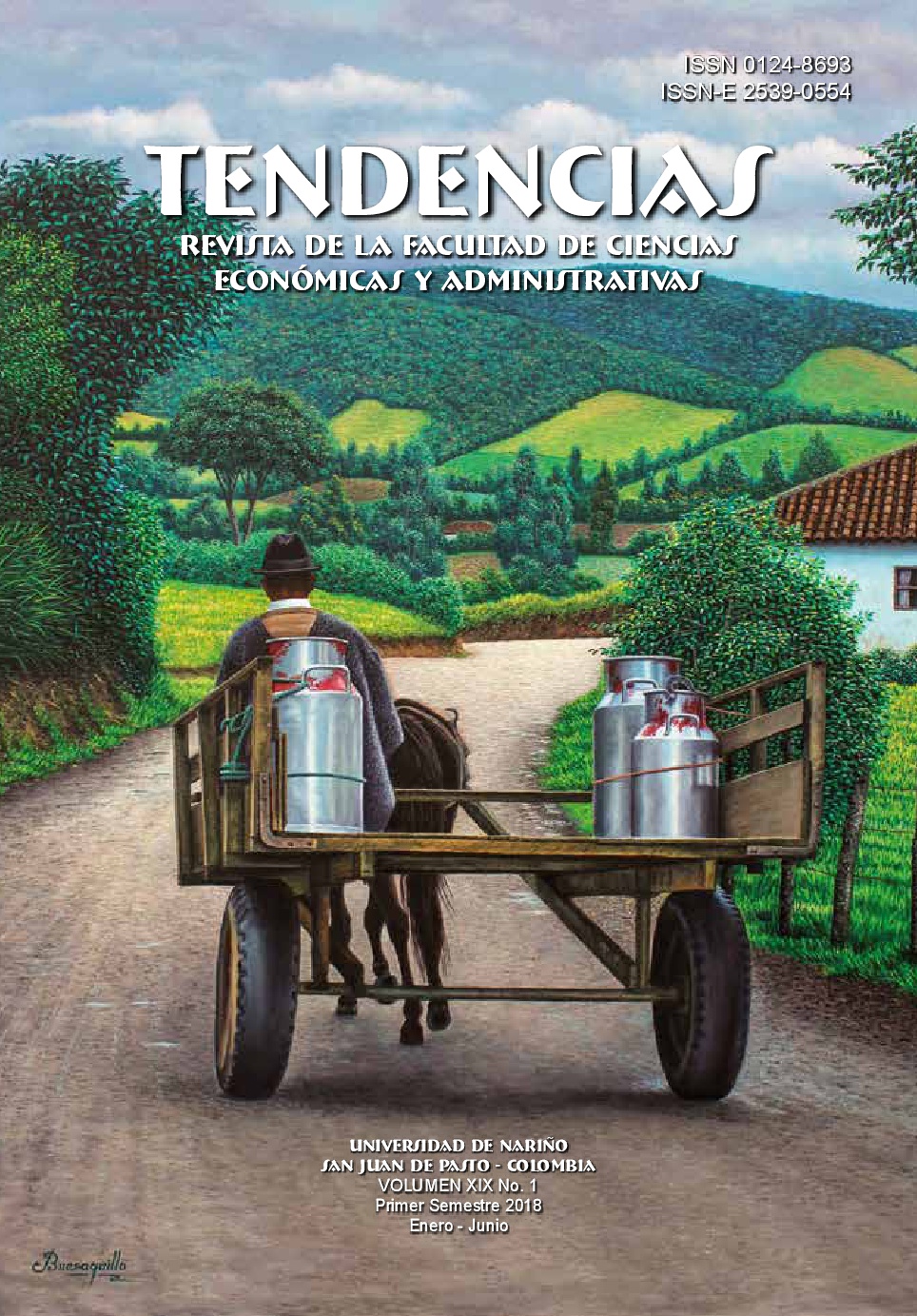Cosmovisions and ancestral practices of the pastos to build regional peace
DOI:
https://doi.org/10.22267/rtend.181901.95Keywords:
cosmovisions, diversity, the Pastos, peace, ancestral practicesAbstract
This article is oriented to the interpretative analysis of the cosmovisions and ancestral practices of the “Pastos” around the pachamama, minga, religiosity, regional tales and the black and white carnivals, with the aim of resizing their epistemological and pedagogical contributions in theconstruction of regional peace. Within the framework of the qualitative research paradigm and the ethnographic approach, participant observation techniques, in-depth interviews, informal conversations and documentary review for the collections of information were used. Six teachers from the University of Nariño were interviewed, sociocultural practices were observed in five municipalities, magazines and books were reviewed. The results obtained are valuable and relevant to: make visible the productive and economic collectivism; assess the minga or borrowed hands based on the social fabric; understand that popular religiosity holds sacred respect to nature, to the absolute and to the neighbor; understand that humor in laughter, joy, recreation and happiness; and that the carnival is a mestizo, multi-ethnic and intercultural party.
Downloads
References
(1) Abelllo, I., De Zubiría, S. y Sánchez, S. (1999). Cultura: teorías y gestión. Ediciones Unariño. Pasto.
(2) Afanador, C. (2011). Organización espacial de los Pastos coloniales. En: Academia Nariñense de Historia. Pasto.
(3) Afanador, C., Tovar, J. y Reyes, Á. (2008). Dossier del Carnaval de Negros y Blancos. Ediciones Corpocarnaval. Pasto.
(4) Bajtín, M. (1987). La cultura popular en la edad Media y el Renacimiento. El contexto de François Rebeláis. Editorial Alianza. Madrid.
(5) Barbero, J. M. (2005). “Interculturalidad, desafíos a la Nación y políticas públicas”. En: Cuadernos de Sociología, Nº 39, pp. 53-59. Bogotá.
(6) Boff, L. (2013). La sostenibilidad: qué es y qué no es. Editorial Sal Terrae. España.
(7) Geertz, C. (2003). La Interpretación de las culturas. Editorial Gedisa S.A. España.
(8) Huanacuni, F. (2010). Buen vivir/Vivir Bien. Filosofía, políticas, estrategias y experiencia regionales andinas. Editorial CAOI. Lima.
(9) Mamián, D. (2004). Los Pastos en la danza del espacio, el tiempo y el poder. Ediciones Unariño. Pasto.
(10) Mesa, E. (2016). El carnaval, escenario para el encuentro Intercultural. EdA Special Issue, pp.320-325. Florencia, Italia.
(11) Montenegro, A. (2002). Una historia en contravía: Pasto y Colombia. Editorial Malpensante. Bogotá.
(12) Muñoz, F. y Molina, B. (1998). Cosmovisiones de Paz en el mediterráneo. Editorial Universidad de Granada. España.
(13) Papa Francisco (2015). Carta Encíclica Laudato Sí. Sobre el Cuidado de la Casa Común. Disponible http://w2.vatican.va/content/francesco/es/encyclicals/documents/papa-francesco_20150524_enciclica-laudato-si.htm (Recuperado en: abril 29 de 2018)
(14) Sanz, R. (2006). Diccionario de la Lengua Pastusa. Ediciones Graficolor. Pasto.
(15) UNESCO (2001). Declaración Universal sobre Diversidad Cultural. Disponible en: http://unesdoc.unesco.org/images/0012/001271/127162s.pdf (Recuperado en abril, 2-18)
(16) UNESCO (2003). Convención para la Salvaguardia del Patrimonio Cultural Inmaterial. Disponible en: http://unesdoc.unesco.org/images/0013/001325/132540s.pdf (Recuperado en mayo, 16 de 2018)
(17) Zambrano, C. V. (2006). Ejes políticos de la diversidad cultural. Universidad Nacional de Colombia. Siglo de Hombres Editores. Bogotá.
(18) Zambrano, C. V. (2010). “Territorio, diversidad cultural y trabajo social”. En: Revista Trabajo Social, Nº 12 pp. 9-24. Bogotá.
(19) Zúñiga, E. (2002). Nariño, Cultura e Ideología. Graficolor. Pasto.
Published
How to Cite
Issue
Section
License
Those authors who have publications with this journal, accept the following terms:
This journal is licensed under a Creative Commons Reconocimiento-NoComercial 4.0 Internacional License. The articles can be copied, distributed, adapted and communicated publicly, as long as the credits of the work are recognized and the respective source is quoted. This work can not be used for commercial purposes.
To increase their visibility, documents are sent to databases and indexing systems.
The content of the items is the responsibility of each author, and does not compromise in any way, journal or institution.







































